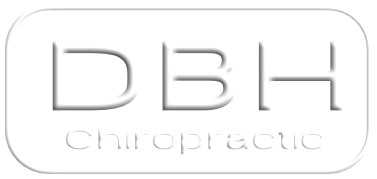
Sciatica Treatment • Colorado Springs, CO
New Patient Special:
Consult, exam, X-rays (if needed) & 1st Treatment for $39. Limited spots available each month!
Located in Colorado Springs • In-house X-rays • Focused on disc, nerve & sciatica cases
Zero pressure. If we can’t help, we’ll tell you on the spot!
End Sciatica Pain Without Surgery or Injections
Most patients feel major relief in 6–12 visits.
✅ Target the root cause of sciatic nerve pain
✅ Non-surgical options
✅ Same day appointments
Why Patients Choose DBH Chiropractic for Sciatica Relief?
Not all sciatica care is the same. At DBH Chiropractic in Colorado Springs, we’ve built a focused approach for people dealing with disc issues, nerve pain and leg symptoms – not just general back pain.

Focus on Disc & Nerve Problems
We specialize in sciatica, herniations, and pinched nerves – not just “back pain.”

3 FDA-Cleared Technologies
Decompression + Class IV laser + flexion-distraction all under one roof.

Clear, Efficient Care Plans
You’ll know exact cost and visits needed on day 1.
Your Sciatica Relief Timeline
Consult + Exam + X-rays (if needed) + 1st Treatment
Visit 1 – Discovery + Treatment (45 min)
Dr. Daniel uncovers the exact root cause — in most cases, we start the journey of getting you feeling better as soon as possibly
2–3 visits/week → pain drops, sleep returns, you sit without wincing
Weeks 1–4 – Rapid Relief Phase
70–90% leg pain reduction typical (clinic data)
Taper to 1–2 visits/month → bulletproof spine
Beyond – Stay Strong
Minimize risk for flare-ups (optional wellness plan)
Stop Sciatica Pain in Its Tracks
80% of Patients Feel Relief in 12 Sessions or Fewer
At DBH Chiropractic, we deploy cutting technologist-backed spinal decompression, FDA-cleared Class IV laser, and gentle, evidence-based adjustments to decompress the nerve, crush inflammation, and rebuild pain-free movement — no surgery, no endless meds.
Non-Surgical Spinal Decompression
Computer-controlled traction creates negative disc pressure, retracting herniations and instantly unloading the sciatic nerve.

Class IV Deep-Tissue Laser
25-watt FDA-cleared beam penetrates 5–7 cm to extinguish nerve inflammation and triple healing speed.

Flexion-Distraction + Precision Adjustments
Low-force table motion + targeted drops open joints, restore glide, and break the spasm-pain cycle.

Don’t Take Our Word For It
See What Colorado Springs Locals Say
Hours
Monday - Thursday
8:00am - 7:00pm
Friday
7:30am - 2:00pm
Location
8842 N Union BLVD
Colorado Springs, CO, 80920
What Is Sciatica?
Sciatica is pain caused by irritation or compression of the sciatic nerve — the largest nerve in the body. It usually starts in the lower back or hips and travels down the leg, sometimes all the way into the foot.

The sciatic nerve runs from the lower back through the hips and down each leg.
What Causes Sciatica? What are the symptoms?
Sciatica happens when something compresses or irritates the sciatic nerve. The most common causes include:
Shooting pain down one or both legs
Numbness or tingling in the leg or foot
Lower back pain with radiating leg pain
Weakness in the leg or difficulty walking
Pain that worsens when sitting, bending, coughing or driving
The good news? With the right treatment, most sciatica cases can be relieved without surgery.
Root Cause Focused
We identify exactly what’s compressing or irritating your sciatic nerve.
Leg & Nerve Pain Relief
Treatments are designed to calm inflammation and reduce nerve pressure.
Focus on Disc & Nerve Problems
Most patients improve without injections or surgery.
Got Questions?
We’ve Got Straight Answers
Yes — if it’s mechanical. 95% of sciatica comes from disc bulges, stenosis, or piriformis syndrome — all fixable without surgery. We’ll know in Visit 1 with exam + X-ray. If you’re not a candidate, we’ll tell you upfront and refer out (happens <10% of the time).
Most feel 50–80% good relief in approximately 6 visits. 50% report immediate leg relief after Visit 1. Full resolution (pain-free, no flare-ups) usually by Visit 12. Severe cases may need up 24 visits.
Very safe — zero twisting or popping. We use gentle flexion-distraction tables and instrument-assisted adjustments. No high-velocity thrusts unless you request them. Decompression and laser are completely non-invasive.
We’re different. Most chiros adjust only. We combine 3 FDA-cleared technologies (decompression, Class IV laser, flexion/distraction) — proven in studies to outperform standard care. 50% of our patients failed elsewhere first.
Absolutely. Pay only the $39 exam fee. If we’re not a fit, you walk away with answers and zero obligation.





